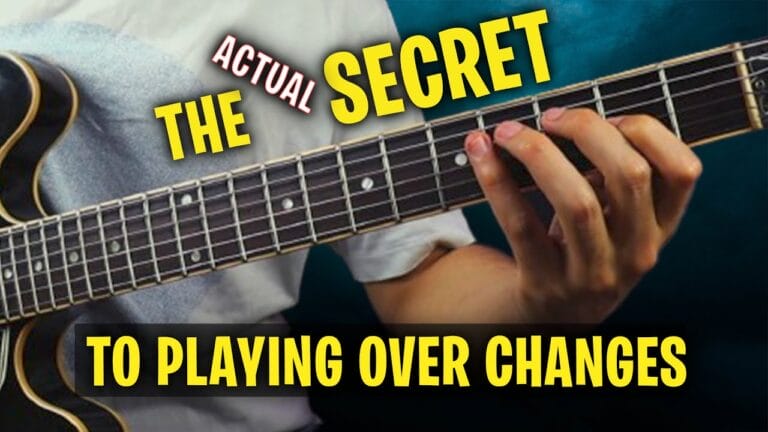Invert Chords and Change Your Life Forever (Just Like I Did)
Discover How To Invert Chords
Learning to play the guitar can be both exhilarating and overwhelming. There are countless chords, scales, and techniques to master, and it can be challenging to know where to begin. But as I’ve discovered, asking yourself one simple question can help you unlock a world of possibilities and the question is: : can this be inverted?
When you learn a chord or phrase, you’re essentially learning a structure or pattern. But by asking yourself if this can be inverted, you’re opening up a whole new world of musical possibilities. For example, take the A flat chord. This chord can be inverted, and by recognizing the new dance you’ve created around the inversion, you can duplicate and vary that movement. The same goes for phrases – by inverting them, you can create new melodies and explore different possibilities.
Learning to invert chords and phrases is about recognizing the movement around a chord tone. You can use this knowledge to create enclosures or movement around the chord tone, and then vary and duplicate that movement in different inversions. This is a powerful tool that can help you create new melodies and explore new sounds.
But it’s not just about learning to invert chords and phrases. It’s also about understanding the context in which they’re played. When you learn a phrase or lick, it’s essential to understand what chord it’s played over. This way, you can associate the appropriate scale material into those chords and create new melodies that fit perfectly with the chords you’re playing.
Inverting ideas is also a great way to incorporate new concepts into your playing. For example, when I was learning to play solos by Charlie Parker, I tried to invert his phrases to create new melodies. By taking a phrase and inverting it to a different chord tone, I was able to create a whole new feel and explore different possibilities.
Learning to invert chords and phrases is a deep and powerful tool that can take your playing to the next level. If you’re interested in learning more about this technique and other guitar concepts, I highly recommend checking out the Galactic Modern Guitar series. This program teaches you how to make arpeggios out of different triads, introduces enclosures and Bebop language, and shows you how to improvise and voice lead ideas all over the fretboard. With day-to-day progress, you’ll be able to incorporate new sounds and concepts into your playing and become the guitar player you’ve always wanted to be.
In conclusion, asking yourself if something can be inverted is a simple yet powerful tool that can help you unlock a world of musical possibilities. By recognizing the movement around a chord tone and understanding the context in which a phrase is played, you can invert ideas and create new melodies. Whether you’re a beginner or an advanced player, this technique can help take your playing to the next level. So the next time you’re learning a new chord or phrase, ask yourself: can this be inverted?
Exploring Chords from a Different Angle
When you flip a chord upside down, something magical happens. Suddenly, the same old chord takes on a new flavor, a new vibe. It’s like looking at your favorite painting from a different angle – familiar yet refreshingly different.
Understanding chord inversion isn’t about getting lost in complex theories. It’s about seeing chords in a new light, discovering the beauty in their rearrangement. Just like rearranging furniture in a room can change its feel, inverting chords can completely transform the mood of a song.
But it’s not just about the sound. Inverting chords can also make your playing smoother. Imagine driving down a winding road with no bumps or potholes – that’s what smooth chord transitions feel like. By flipping chords around, you can find smoother paths between them, creating a musical journey that flows effortlessly.
So next time you strum a chord on your guitar, take a moment to think: what if I flipped this chord upside down? You might be surprised by the new musical landscapes you discover.




















